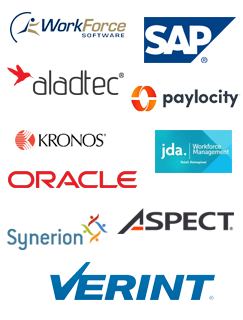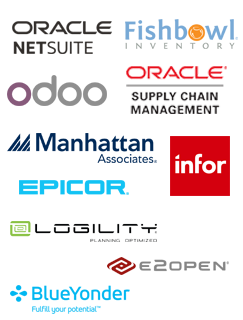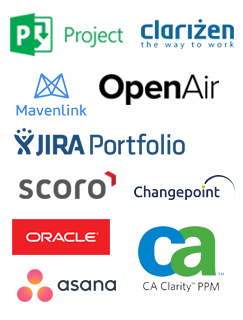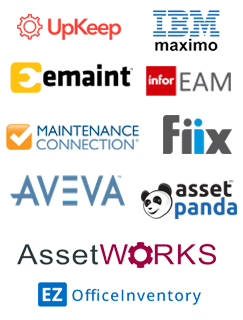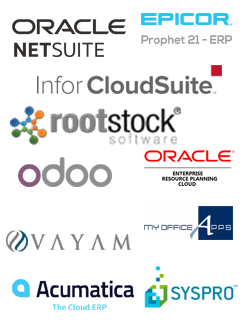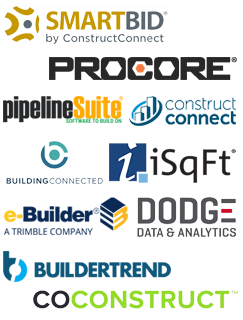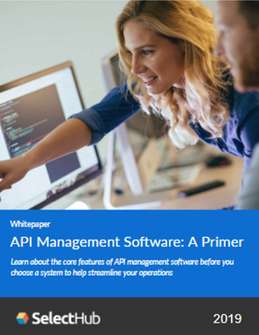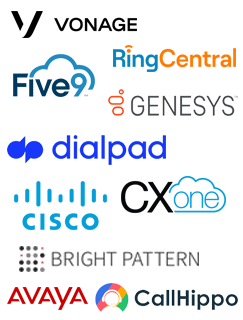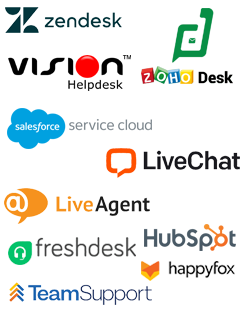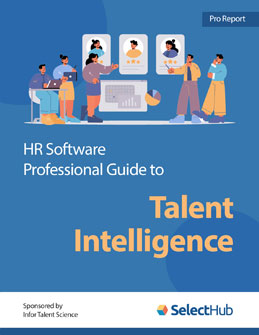Many leading software solutions offer business intelligence with AI, machine learning and deep learning capabilities. As a buyer, deciding whether they’re worth the investment can be confusing. This article discusses deep learning vs machine learning vs AI, how they are related and the challenges in adopting these cutting-edge technologies.

This article discusses the below key points:
First, let’s get to know deep learning vs machine learning vs AI.
Deep Learning vs Machine Learning vs AI
People often use the terms interchangeably, but it all derives from artificial intelligence.
Machine learning (ML) is a more intelligent form of AI, while deep learning is machine learning with artificial neural networks at the backend.
What is AI?
Artificial intelligence is the ability of programmable devices to emulate human responses to external triggers, like performing tasks on command. For “programmable,” think “conditioned” in the human context. Developers write the code that dictates the AI program’s decision paths when you ask it to do something. The system’s likely actions are already written in the program.
It’s similar to conditioned responses in situations, like getting out of the way of a moving vehicle. Critical thinking is when you decide to move to a safe place and check if others around you are not at risk. You’re using the information gathered from your experience to your benefit. That’s machine learning.
What is Machine Learning?
As mentioned above, machine learning systems focus on the learning aspect of AI. They apply critical thinking to perform requested tasks by analyzing the available data and creating new decision paths. ML systems generate newer, more intelligent algorithms better equipped to respond to evolving requests.
It explains why big data systems work so well for AI software – the larger the data volumes, the smarter your machine learning algorithms will be.

What is Deep Learning?
Behind deep learning insights are hundreds of thousands of interconnected nodes forming artificial neural networks (ANNs). Like the human brain, these neural networks are multi-layered, with each node responsible for solving a part of the problem. It conveys the output to the next node and so on until they generate the final answer.
This process happens at the backend when you use your smart devices, chatbots and voice assistants. Image recognition and autonomous cars are other common deep learning, AI instances in action.
Software developers leverage deep learning AI software stacks to build applications for conversational AI, recommendation systems and computer vision. These tech stacks provide building blocks for designing, training and validating deep neural networks through high-performance GPU-driven interfaces. They come equipped with pre-trained models, training scripts, optimized framework containers and inference engines for popular deep learning models.
You can fine-tune, optimize and deploy pre-trained models across various domains and AI workloads. Pytorch, Tensorflow and MXNet are some scalable, open-source libraries to help you develop and train machine learning models.
Applications
AI-capable tools scale with your legacy software to guide insights at any project stage. Predictive text and natural language summaries support automated recommendations for data modeling. Even non-technical users can build data models with AI-driven capabilities like automatic feature generation. Such attributes are the main draw for enterprises wanting quick time to insight.
Let’s look at how various industries are successfully applying these technologies.
Healthcare
Prognosis and treatment protocols are two significant areas where AI is revolutionizing medicine. Faster and more accurate diagnoses can help patients get more personalized treatment, especially for time-critical conditions. AI’s role in tracking the spread of COVID-19 has been instrumental in preventive planning and vaccine administration strategies.
Augmented intelligence capabilities like AI-ML help in decision support by interpreting the complex data in MRIs, CT scans, X-rays and biopsy samples. Advanced diagnostic tools can detect cancer with nearly 100% accuracy in pathology images, serving as triage and freeing physicians to focus on patients.
Financial Services
Insurance companies can better understand what drives variances in policy purchases through ML-driven time-series analysis of policyholders’ transactions. You can predict patterns for each buyer persona by combining existing data with customer preferences, financial literacy and other behavioral parameters. Sell more policies by tailoring engagement strategies to specific customer segments.
Or, input your financial profile into AI-driven platforms and generate a personalized financial plan, saving time and money on financial consultations. The system matches your goals with your profile to optimize your funds through a readymade investment strategy.
Retail
The voluminous growth of big data coupled with quicker time-to-market is boosting technology adoption to speed up business processes, including data analysis. The global augmented intelligence market size, valued at $11.73 billion in 2020, is expected to increase to an impressive $121.57 billion by 2030, growing at a CAGR of 26.4%.
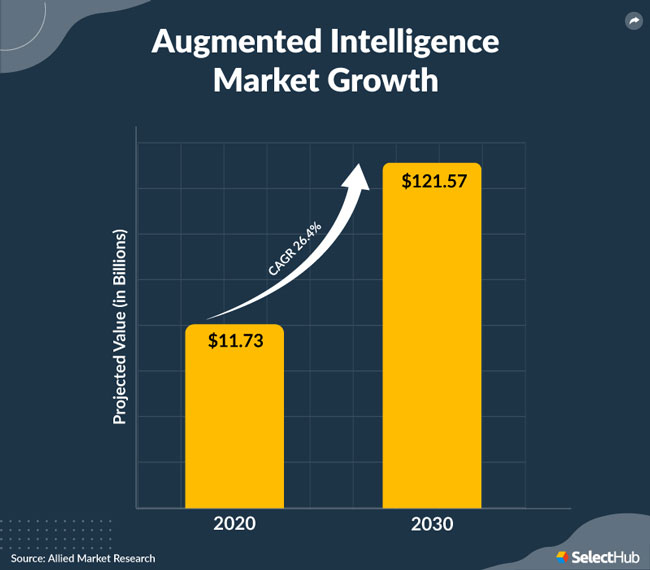
AI predictions in retail help you anticipate customer demand and replenish depleted stocks ahead of time. Every consumer action on your website and in your brick-and-mortar stores is valuable input for your machine learning algorithms. ML automates workflows, so you can sit back and relax as your system caters to product demand fluctuations by combining retail data with supply chain insights.
Artificial intelligence combines store camera images with computer vision to map the buyer’s journey on the shop floor. Heat mapping can track those products that customers pick up and return and where they go after that. How can you sell these straggler products better? Such insights are priceless for you to plan buyer engagement initiatives for boosting sales.
Get our BI Tools Requirements Template
Content Streaming Platforms
Entertainment buffs are spoilt for choice as platforms like Netflix, Hulu and Amazon offer a vast repertoire of movies, video games and music. AI provides the necessary support for editing, cinematography, voice-overs, video production and uploading content online. AI offers personalized suggestions on what to watch using viewer ratings and your browsing history.
These are areas where artificial intelligence transforms business processes to boost efficiencies and increase revenue. The technology has permeated many more domains, including manufacturing, gas and energy utilities and transport.
However, adopting augmented intelligence can be challenging, with organizational culture and cost significant deterrents. Let’s delve deeper.
Challenges with Adoption
- SMBs might find the cost out of their reach, and the product price is only a part of the expense. Globally, organizational data is not structured enough for advanced systems and the technology to transform it into an AI-ready format can add to the overhead.
- AI systems are more high-maintenance than static software tools; ML algorithms are power-intensive and need iteratively more cores and GPUs to perform well. Your business applications, including CRMs, ERPs and other BI and analytics tools, need to be robust enough to work with AI systems.
- Adoption is an ongoing process; it can take a couple of years to a decade for the solution to mature enough to impact revenue noticeably.
- A significant challenge to augmented intelligence adoption is company culture. Like other technology, your managers are more likely to push for scaling with the tool, while your executives might be diffident about adapting to change. Additionally, they might feel insecure about losing their jobs to new technology.
Is artificial intelligence impacting jobs? It’s a prevalent concern because people see many manual and cognitive tasks being automated, preventive maintenance and autonomous driving being some use cases. Automation means faster production, which translates to more customers and more staff to manage transactions at your store’s checkout counters.
In effect, AI and automation are likely to create as many jobs as they make redundant.
At the same time, AI tech skills will still be in demand, and soft skills will continue to be a huge deal. There will always be roles that need creativity, emotional intelligence and problem-solving. If you work with computers, scaling with new technology can help you retain the specialized skills businesses want.
Incorporating AI into your business need not be a disruptive experience. Following certain best practices can help.
Compare BI Pricing & Costs with our Pricing Guide
Best Practices
- Improve the software’s usability by upskilling employees with regular workshops and reinforcing learning through periodic training sessions.
- Good quality data builds trust; large volumes of good quality data drive deep learning, AI and machine learning systems. Invest in data management technology for governance compliance across the organization.
- Show that the technology works with proof of concept and demos. Talk about and amplify the success of AI projects to encourage your employees to learn and use the software.
Pushing for early AI adoption can put your company ahead of the competition.
Software Selection
Many BI tools have similar capabilities for AI-ML, and shortlisting the products that fit your needs can be a daunting task. Assess your business needs internally by asking questions of your stakeholders; define what you hope to achieve by utilizing AI software with a requirements checklist. Or, get started with our free readymade checklist.
Additionally, reach out to industry peers to get their feedback on augmented intelligence software.
Check out our BI comparison report for a feature-by-feature analysis of the market leaders. Or reach out to us for guidance on selecting a tool that suits you.
Budget is a critical factor when you are shortlisting products. Get pricing information on vendors’ websites, or reach out to them directly. Our price guide is a handy resource on what an augmented BI tool is likely to cost you.
Summing Up
Deep learning vs machine learning are cutting-edge technologies disrupting business in unimaginable ways. Data science experts are still discovering new ways to harness their power to analyze data to help humankind, commercially and otherwise. The sky’s the limit.
Do you have any questions on deep learning vs machine learning vs AI? Are you using a tool with these capabilities or planning to buy one? Let us know in the comments below!









